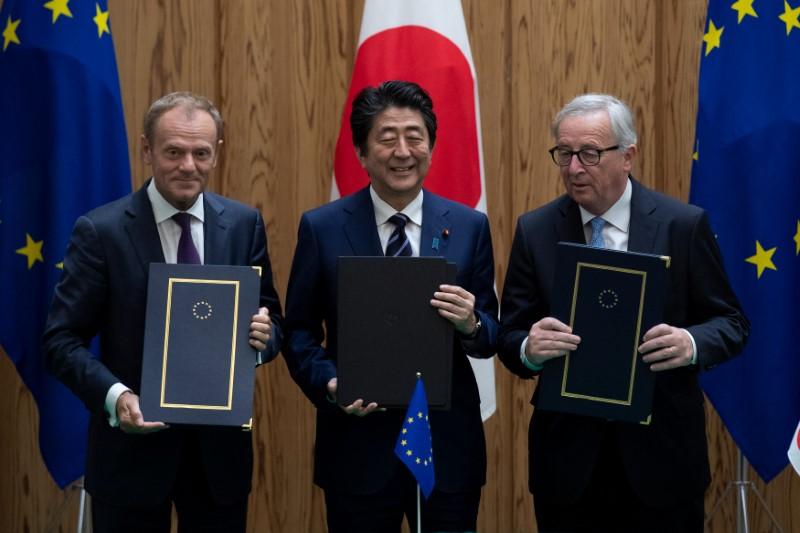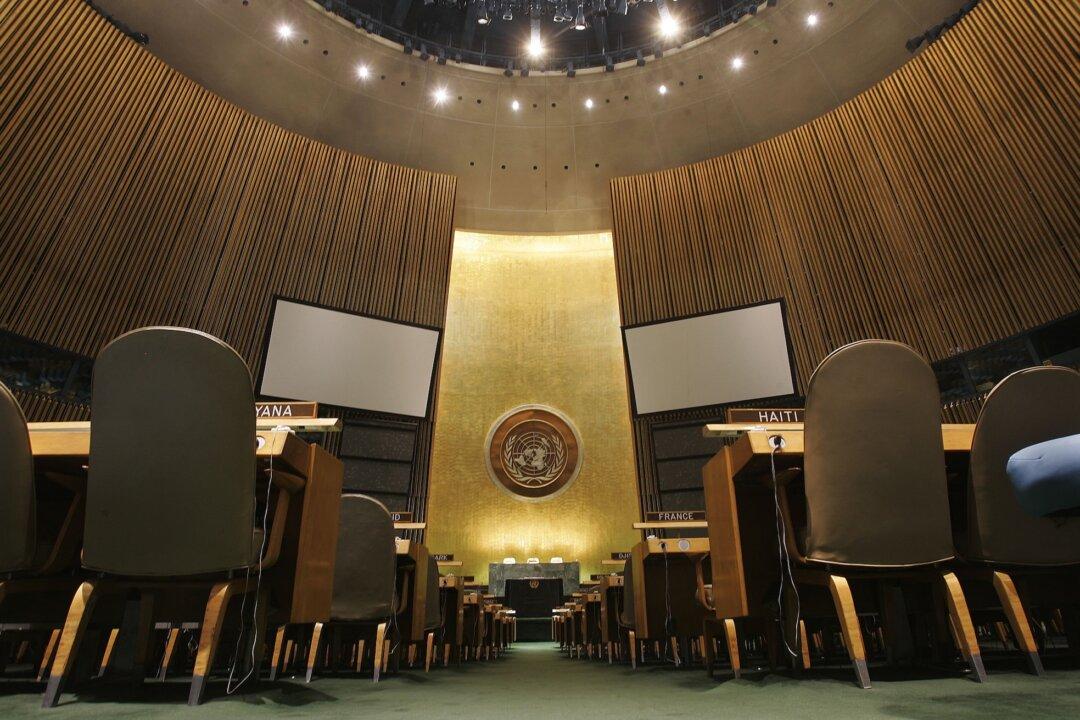Leaders from the European Union and Japan signed a landmark trade deal on July 17, creating one of the world’s largest open trade zones including more than 600 million people and about a third of global GDP.
At the EU–Japan summit in Tokyo, presidents Jean-Claude Juncker and Donald Tusk and Japanese Prime Minister Shinzo Abe signed the EU–Japan Economic Partnership Agreement, the biggest trade deal ever negotiated by the European Union.





